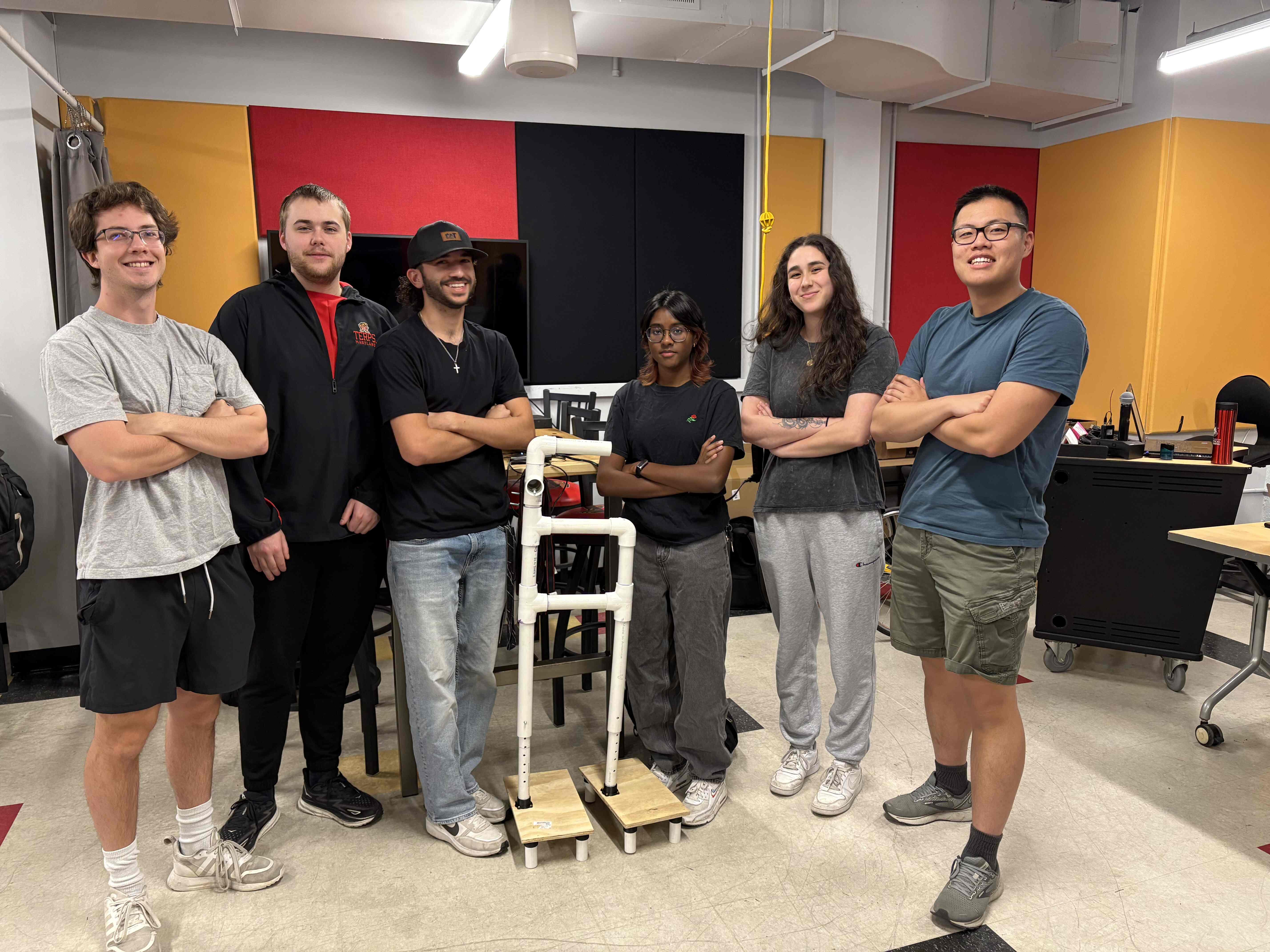Project Description:
Our objective is to develop a purely mechanical assistive device that empowers individuals—primarily elderly users with reduced muscle strength, limited range of motion, and diminished balance—to safely and independently navigate staircases. Recognizing that traditional mobility aids often fall short in providing the necessary support for stair traversal, especially in the absence of a caregiver, our design emphasizes simplicity, reliability, and user autonomy.
To address these challenges, we have designed a multi-function stair attachment that will reduce the difficulty of climbing stairs, support the user during unbalanced periods of time as they transition from step to step, and serve as a safety mechanism to reduce the risk of severe injuries from stair-related falls. Our design consists of a two legged cane with integrated half-steps at the base of each leg, a horizontal crossbar connecting the cane to an anchoring slider on the wall railing, and a backpack harness that is fastened to the crossbar. Many of our stakeholders, especially elderly users, struggle to lift their feet more than a certain height due to lack of mobility or strength. Given this, the concept of the half step is meant to reduce the vertical distance of a step into two shorter steps, making it more manageable to travel up a height.
The cane attaches to a wall-mounted stair railing via a horizontal support bar, which connects through a removable pin joint. The horizontal bar mounts to the stair railing with another pin joint and includes a locking ratchet mechanism that prevents the bar from sliding backwards down the stairs. The joints on either side of the crossbar are free moving on one axis, but rigid in the direction of gravity that the user is being pulled down towards. This orientation of joints allows the user to easily lift the cane through rotation on the axis onto the next step, but its movement is still restricted in a set path of motion for ease of use. In addition to step-height assistance and balancing aid, the system incorporates a fall-prevention feature in the form of a backpack harness. The harness is snugly bucked around the torso of the user, with high strength straps fastening the backrest to the front of the crossbar. These straps offer enough slack to allow natural upper-body motion while climbing the stairs but will catch the user in the event of a fall, acting as a passive safety measure to prevent injury.
Some components of our design, such as the half step, have existing proof of concepts that are marketable in the industry. We chose to use market research we have done so far to our advantage, with the knowledge that the implementation of these concepts are actually feasible and beneficial to users if designed correctly. The part of our design which is completely unique is the crossbar and attached handle system, which has no existing proof of concepts or design exploration. We anticipate that this will be the greatest challenge in prototyping and collecting quantitative data in order to prove the effectiveness of our design to the stakeholder. Through feedback from relevant stakeholders and a focus on user-centered design, this assistive stair climbing device aims to promote independence, restore confidence in mobility, and reduce reliance on personal caregivers in home and clinical settings.
